Click on images to enlarge
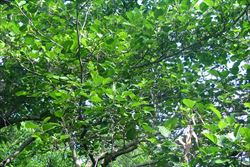
habit in spring (Photo: Sheldon Navie)
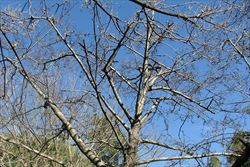
habit in winter (Photo: Sheldon Navie)
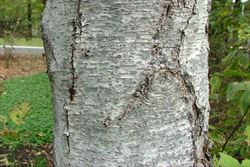
greyish bark on the main trunk (Photo: Sheldon Navie)
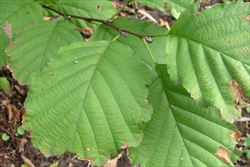
older leaves and growing buds (Photo: Sheldon Navie)
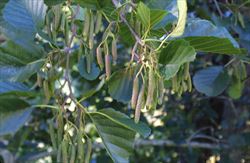
younger leaves and elongated male flower clusters (Photo: Trevor James)
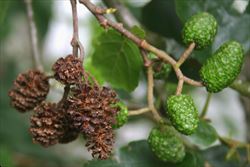
female flower clusters and mature fruit (Photo: Trevor James)
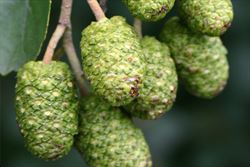
close-up of the female flower-clusters (Photo: Trevor James)
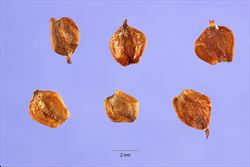
close-up of seeds (Photo: Steve Hurst at USDA PLANTS Database)
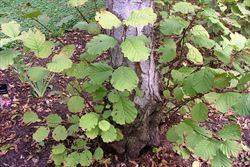
profuse suckering from the base of the trunk (Photo: Sheldon Navie)
Scientific Name
Alnus glutinosa (L.) Gaertn.
Synonyms
Betula alnus L. var. glutinosa L.
Family
Betulaceae
Common Names
alder, black alder, common alder, English alder, European alder, European black alder, Irish fearnog, sticky alder
Origin
Native to north-western Africa (i.e. Algeria, Morocco and Tunisia), Europe and western Asia (i.e. Iran, Turkey, southern Russia and Kazakhstan).
Naturalised Distribution
Naturalised in some parts of south-eastern Australia (i.e. in the Blue Mountains in central New South Wales and in the ACT). It is possibly also naturalised in Victoria and in southern New South Wales.
Also widely naturalised in other parts of the world, including Canada and north-eastern USA.
Notes
Black alder (Alnus glutinosa) is regarded as a significant environmental weed in the ACT and as a "sleeper weed" in other parts of south-eastern Australia. This species is grown as an ornamental in the temperate regions of Australia, and is often associated with metropolitan parks near lake shores and waterways. While it has only recently become naturalised, black alder (Alnus glutinosa) is thought to have significant weed potential. It is tolerant of waterlogging and has been reported to invade waterways (i.e. riparian vegetation), lake margins, and other damp ground.
Herbarium data would indicate that this species is very sparingly naturalised in Australia, with only a couple of records from New South Wales and the ACT. It has been collected from streamsides in Canberra, where it was growing amongst willows and other exotic species, and at Katoomba in the Blue Mountains, where it was collected from a wet sclerophyll forest.
However, some vegetation studies and other unconfirmed reports would indicate that black alder (Alnus glutinosa) is more widespread and common than this. It is reported to have invaded several cold damp sites around lakes and river corridors in the ACT. In fact, its growing presence around the margins of Lake Burley Griffin led to its distribution being mapped as part of a study of invasive willows in this area. This study found that black alder (Alnus glutinosa) was very invasive, and it was the most dominant or second most dominant species around large parts of the north-western end of the lake. In fact it was suggested that black alder (Alnus glutinosa) may be posing more of a threat to the immediate surrounds of the lake than the willow species, and that it should be controlled as part of any willow management program. It was also suggested that if the willows were controlled, and the black alder (Alnus glutinosa) infestations were left unmanaged, it is likely that they will simply recolonise the site.
Black alder (Alnus glutinosa) has also been recorded growing along a disturbed stream beside Lake Ginninderra in Belconnen, in the ACT, and in the Kosciuszko National Park, in the New South Wales southern tablelands region. It was also reported to be abundant at Eltham North, on the north-eastern outskirts of Melbourne, as early as 1992. While this species currently has a relatively restricted distribution, it is thought that it may have the potential to become naturalised throughout the cooler highland regions of south-eastern Australia.
Overseas, black alder (Alnus glutinosa) is a weed of stream banks, moist floodplains, damp depressions, and the borders of wetlands in the USA. It is also reported to form almost pure stands on the North and South Islands of New Zealand.

